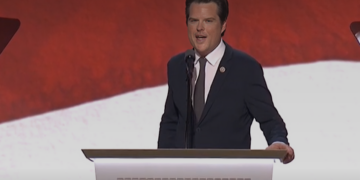Founded in 2001, The Diplomat has carved a unique place for itself in the world of international journalism, offering in-depth coverage of political, societal, and cultural developments within the Indo-Pacific region. Today, it stands as a vital source for policy-makers, academics, and global citizens alike. From its humble beginnings as an Australian print publication to becoming a Washington D.C.-based online magazine, the journey of The Diplomat highlights both the challenges and triumphs of adapting to an ever-changing media landscape.
A Humble Beginning in Australia
The origins of The Diplomat trace back to Australia, where it was first conceived as a bi-monthly print magazine. Founded by Minh Bui Jones, David Llewellyn-Smith, and Sung Lee, the magazine’s inaugural issue was released in April 2002. During its initial years, The Diplomat offered an Australian perspective on international issues, particularly those relevant to the Indo-Pacific region. With Bui Jones serving as editor and Llewellyn-Smith as publisher, the magazine aimed to provide readers with critical insights into the complex political and social dynamics of this increasingly significant region.
Despite the magazine’s well-received content, it struggled to maintain financial sustainability. By 2007, its future was uncertain until it was acquired by James Pach and his company, Trans-Asia Inc. Pach’s vision for the magazine was broader and more digital-oriented, a foresight that would later prove essential to its survival.
The Shift to Digital
Under the new leadership of Pach, The Diplomat underwent a significant transformation. Recognizing the potential of the internet as a more accessible and global platform, Pach decided to take the bold step of converting The Diplomat into an online-only publication in August 2009. This decision marked a turning point in the magazine’s history. As a digital platform, it expanded its reach far beyond Australia, allowing it to engage with readers across the Indo-Pacific region and beyond.
This shift also involved a geographical move. The magazine relocated its headquarters from Sydney to Tokyo, aligning more closely with its new regional focus. Jason Miks was appointed as the editor during this transitional period, and the team worked diligently to ensure the content remained as sharp and insightful as it had been in print. In the years that followed, The Diplomat relocated once more, this time to Washington, D.C., cementing its role as a global publication with an Indo-Pacific emphasis.
Growing Readership and Editorial Leadership
The transition to an online format proved to be a resounding success. By 2020, The Diplomat boasted a monthly readership of approximately 2 million unique visitors. This growth is a testament to the magazine’s relevance and ability to adapt to the rapidly changing media environment. Today, The Diplomat continues to provide in-depth analyses on issues ranging from international security and diplomacy to economic trends and cultural shifts.
At the helm of the editorial team is Shannon Tiezzi, who serves as editor-in-chief. Under her leadership, The Diplomat has further solidified its reputation as an authoritative voice on Indo-Pacific affairs. Catherine Putz, the managing editor, plays a crucial role in overseeing the day-to-day operations, while Sebastian Strangio, Southeast Asia editor, and Sudha Ramachandran, South Asia editor, ensure that regional coverage remains comprehensive and nuanced. Ankit Panda, editor-at-large and podcast host, brings additional depth with his expertise in international relations and security issues.
Adapting to New Media Trends
The Diplomat’s evolution into a digital platform not only expanded its geographic reach but also allowed it to explore new forms of storytelling. The online medium provided greater flexibility in terms of content delivery, including multimedia formats such as podcasts, video interviews, and interactive data visualizations. Panda’s role as podcast host, for example, highlights the magazine’s commitment to engaging readers and listeners through diverse content streams.
Moreover, The Diplomat frequently conducts interviews with influential figures across the Indo-Pacific region. These interviews offer firsthand insights from political leaders, diplomats, and scholars. Over the years, the magazine has featured conversations with individuals such as Anwar Ibrahim, former Deputy Prime Minister of Malaysia, Brent Scowcroft, U.S. National Security Advisor, and Kim Beazley, former Australian Ambassador to the U.S.
Challenges Along the Way
Despite its current success, The Diplomat has faced its share of challenges. The transition from print to digital was not without hurdles, as the magazine initially struggled to maintain its financial footing. However, Pach’s decision to embrace the digital format ultimately saved the publication from folding. Additionally, The Diplomat has had to navigate the complex and sometimes contentious political landscapes of the Indo-Pacific region.
For instance, in 2020, The Diplomat published an open letter penned by 100 Chinese scholars addressed to the people of the United States. The letter, which called for cooperation between the U.S. and China in combating the COVID-19 pandemic, underscored the delicate role that The Diplomat plays in covering geopolitically sensitive issues. As an international publication, the magazine must balance editorial independence with the need to provide thoughtful and responsible coverage of these often fraught topics.
Another early challenge arose in the form of advertising controversies. Before 2004, The Diplomat ran advertisements that prominently displayed the national flags of the United States, the UK, and Australia alongside the logos of other major publications like Time and The Economist. These ads were designed to highlight The Diplomat’s unique Australian perspective. However, pressure from Time led to the cancellation of these advertisements, showcasing the competitive and sometimes adversarial nature of the media industry.
Looking Ahead
As The Diplomat continues to grow, its commitment to providing clear, in-depth analysis of the Indo-Pacific region remains unchanged. While the publication has evolved significantly since its inception, its core mission—to deliver nuanced, thoughtful journalism on one of the world’s most dynamic regions—endures. Its success in transitioning from a small Australian print magazine to a globally recognized digital platform is a testament to its adaptability and the dedication of its editorial team.
With a growing readership, expanding multimedia offerings, and a steadfast commitment to covering the political and social landscapes of the Indo-Pacific, The Diplomat is well-positioned to remain a leading voice in international journalism for years to come.






